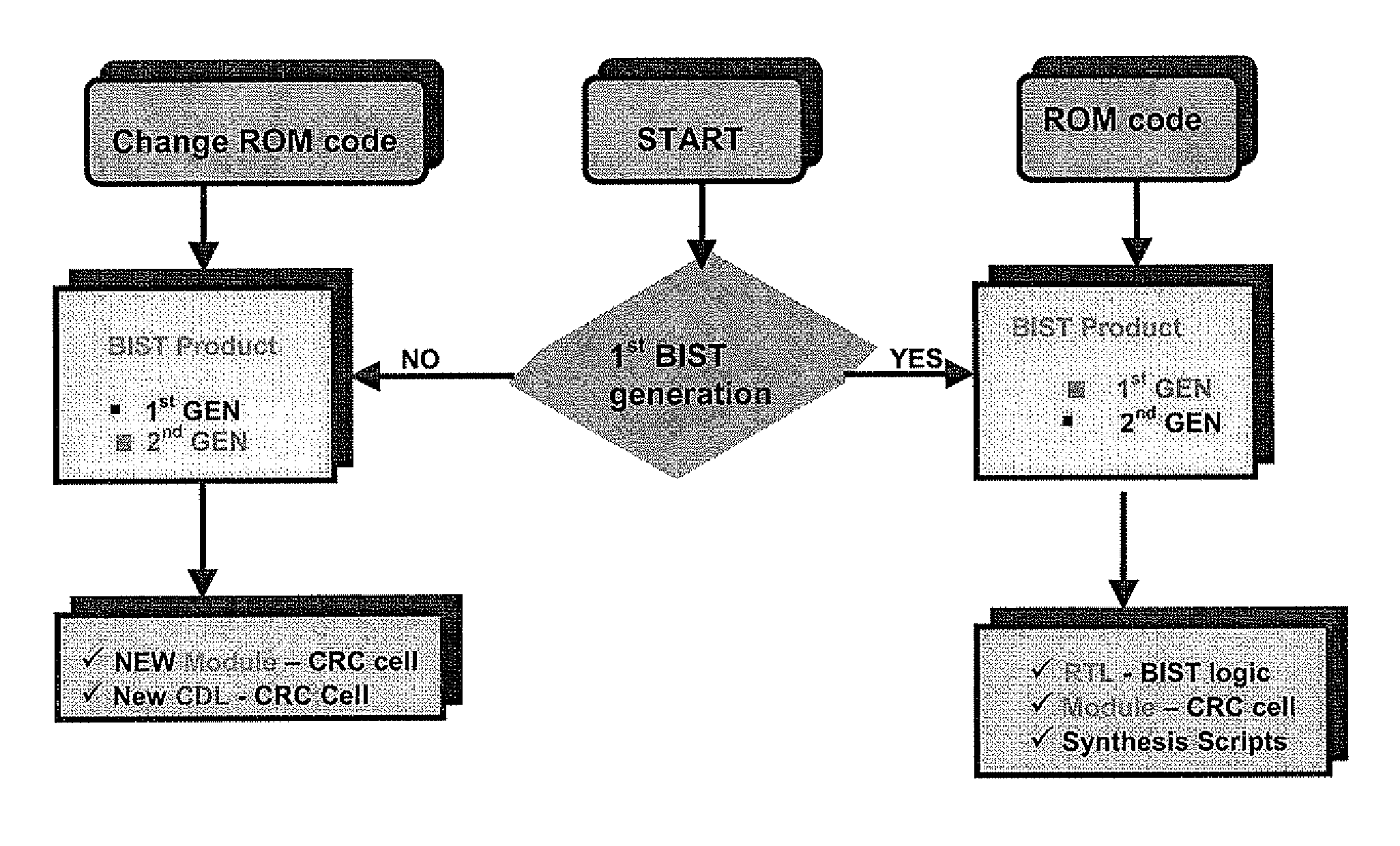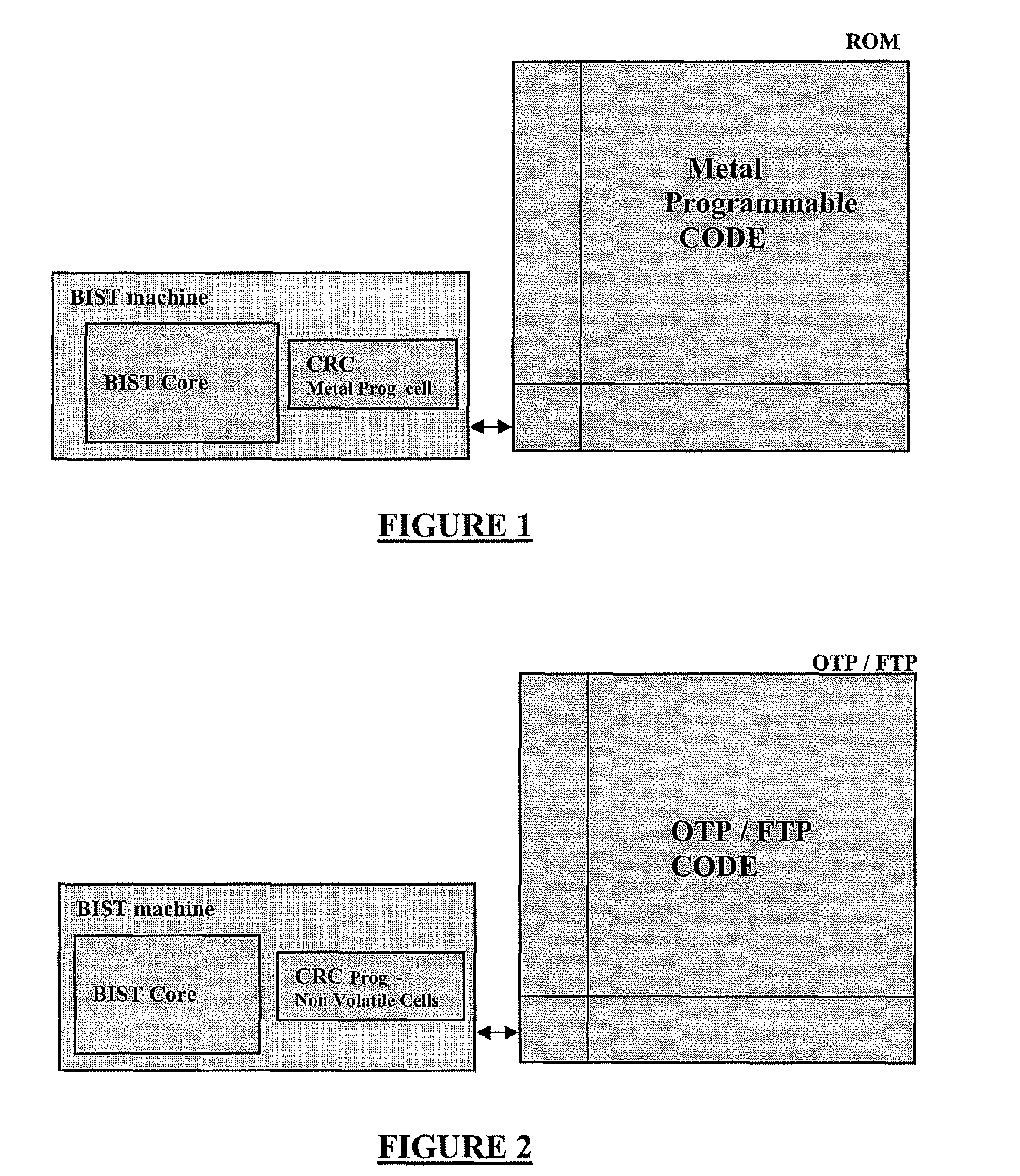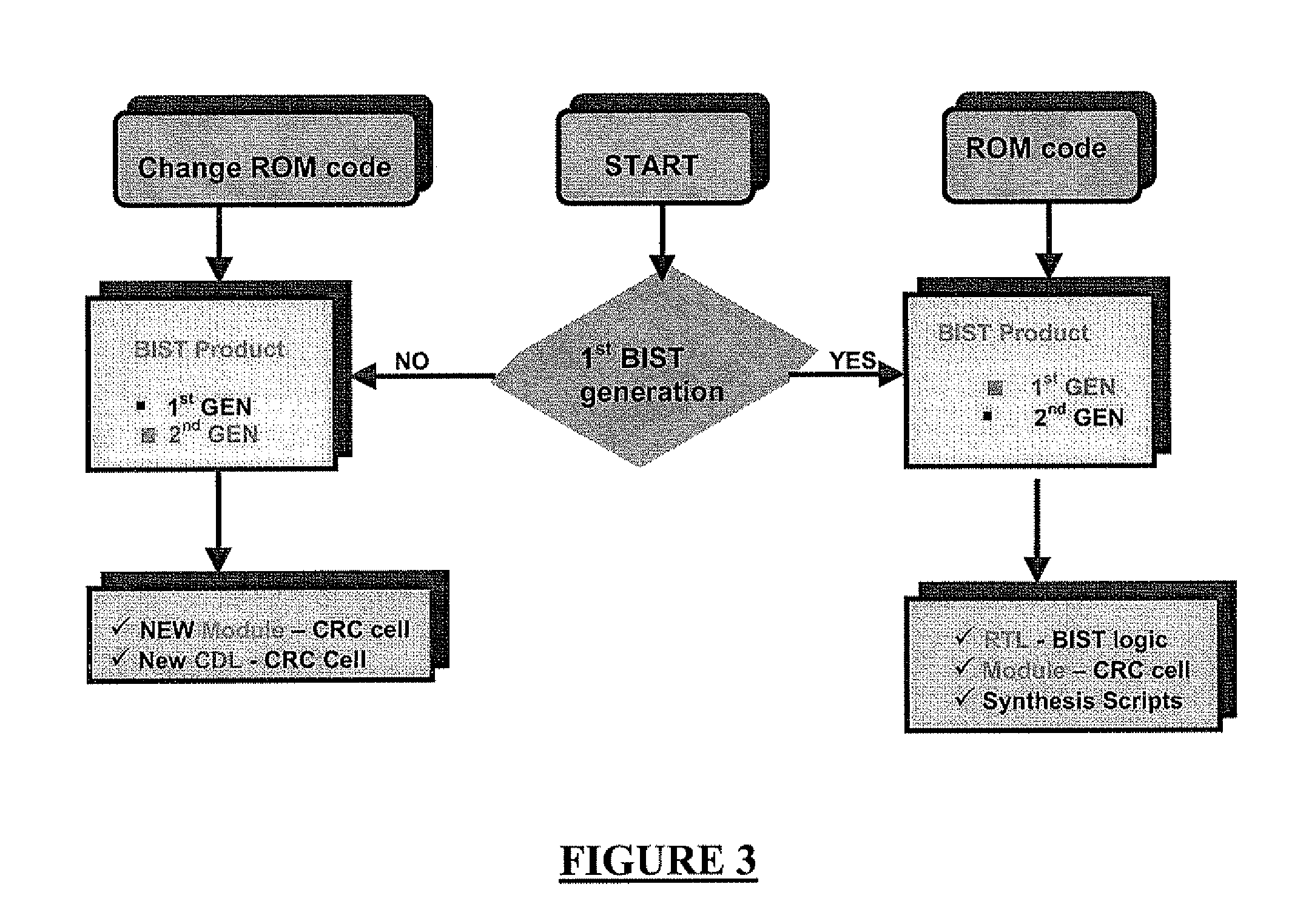Process and system for the verification of correct functioning of an on-chip memory
a technology of correct functioning and process, applied in the direction of information storage, electronic circuit testing, instruments, etc., can solve the problems of increasing laborious and laborious, bist system itself generating error flags, and existing bist may no longer be self-testable, etc., to improve the cost-efficiency of manufacturing and reduce the cost of adaptation of bist circuitry of the complex devi
- Summary
- Abstract
- Description
- Claims
- Application Information
AI Technical Summary
Benefits of technology
Problems solved by technology
Method used
Image
Examples
Embodiment Construction
[0028]The diagrams of FIGS. 1 and 2 illustrate exemplary architectures of BIST systems according to this approach for self-testing the functionality of a nonvolatile memory (ROM, OTP or FTP) storing a certain ROM code, including a prior defined and implemented logic processing machine (BIST Core) capable of calculating a signature for the ROM code as stored in the memory, in order to verify the correct functioning of the nonvolatile memory, and a dedicated nonvolatile storage block (CRC), rewritable or not, coupled to the BIST Core circuitry, in which is recorded the value of a control signature that has been specifically calculated for the ROM code to be stored in the memory (ROM, OTP or FTP) of the devices being fabricated.
[0029]The logic circuitry (BIST Core) of the BIST system is realized in the device during a front-end phase of the fabrication process, whilst the specific control signature for the ROM code to be stored in the memory (ROM, OTP or FTP) is recorded at a later pha...
PUM
 Login to View More
Login to View More Abstract
Description
Claims
Application Information
 Login to View More
Login to View More - R&D
- Intellectual Property
- Life Sciences
- Materials
- Tech Scout
- Unparalleled Data Quality
- Higher Quality Content
- 60% Fewer Hallucinations
Browse by: Latest US Patents, China's latest patents, Technical Efficacy Thesaurus, Application Domain, Technology Topic, Popular Technical Reports.
© 2025 PatSnap. All rights reserved.Legal|Privacy policy|Modern Slavery Act Transparency Statement|Sitemap|About US| Contact US: help@patsnap.com



